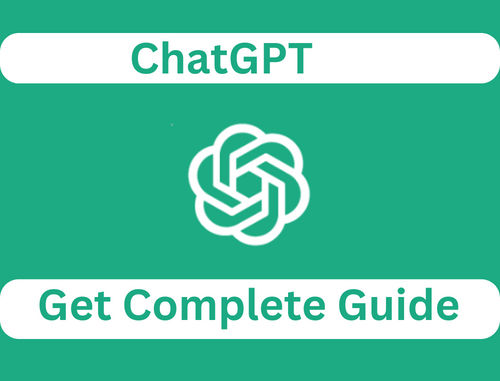
How does ChatGPT work?
ChatGPT4 is an advanced language model that is based on the GPT-3.5 architecture, developed and trained by OpenAI – one of the leading research organizations in the field of AI. The model has been designed to understand natural language and generate human-like responses to complex queries, making it an essential tool for businesses, researchers, and individuals who seek to leverage the power of NLP and AI.
History of ChatGPT
ChatGPT is the culmination of years of research and development by OpenAI, which began its journey in 2015 with the launch of its first-generation language model – GPT-1. Over the years, the company continued to develop and improve its language models, launching GPT-2 in 2019 and GPT-3 in 2020.
GPT-3 was a significant breakthrough in the field of AI and NLP, thanks to its ability to generate human-like responses to complex queries with remarkable accuracy. However, the model had some limitations, such as its size, cost, and accessibility, which hindered its adoption in the mainstream market.
In response to these challenges, OpenAI developed ChatGPT – an advanced language model that builds on the success of GPT-3 while addressing its limitations. ChatGPT was designed to be smaller, faster, and more cost-effective than its predecessor, making it accessible to a wider audience.
What is the difference between ChatGPT and a search engine?
ChatGPT is an intelligent language model developed to converse with users and provide them with helpful responses. Unlike search engines that scour the internet for information, ChatGPT relies on its training data to generate answers, which may contain errors.
One of the significant distinctions between ChatGPT4 and typical search engines like Google is that the latter has access to the most up-to-date information available on the internet. On the other hand, ChatGPT’s knowledge is limited to the data it received before 2021. Consequently, if you ask ChatGPT about the winner of the 2022 World Cup, it won’t be able to provide you with a satisfactory response, while Google can.
It is crucial to bear in mind that ChatGPT’s capabilities and limitations are a result of its design and programming. As a language model, its strength lies in its ability to understand and respond to natural language queries. It is an excellent tool for obtaining information and having a conversation on a wide range of topics. However, it is essential to verify the accuracy of its responses and be aware of its limitations.
What are ChatGPT’s limitations?
Despite its impressive capabilities, ChatGPT4 has its limitations. For one, the model may struggle with questions that are phrased in a specific manner and require rewording to understand the input accurately. Additionally, the responses generated by the model may lack quality, often being plausible-sounding but lacking practical sense or being excessively wordy.
Rather than seeking clarification on ambiguous questions, the model often makes an jano.com.pk guess at what the user is asking, leading to unintended or inaccurate responses. Such limitations have prompted the question-and-answer site StackOverflow to temporarily ban ChatGPT-generated responses to questions.
According to Stack Overflow moderators, “the primary problem is that while the answers that ChatGPT produces have a high rate of being incorrect, they typically look like they might be good and the answers are very easy to produce.” Critics argue that such tools are adept at organizing words in a logical sequence from a statistical standpoint, but they lack an understanding of the context or the ability to determine whether the statements they make are correct.
Another significant limitation of ChatGPT4 is that its knowledge is limited to information up to 2021. Therefore, it is not aware of recent events or news that have taken place since then. As a result, certain prompts may not yield results, such as “Who won the World Cup in 2022?”
Why are some people worried about ChatGPT?
There is growing apprehension regarding the potential of AI chatbots to replace or diminish human intelligence. One example is the chatbot’s ability to generate articles on any topic efficiently, albeit not necessarily accurately, within seconds. This could potentially eliminate the need for human writers. Furthermore, the chatbot can produce entire essays within seconds, making it easier for students to cheat or evade the responsibility of learning how to write properly. As a result, some school districts have blocked access to such chatbots.
Another cause for concern with AI chatbots is their potential to propagate misinformation. As the chatbot is not connected to the internet, it may make errors in the information it shares.
The chatbot itself acknowledges this limitation and states that its responses are not meant to be taken as factual. It always urges people to verify any information they receive from it or any other source. OpenAI, the creators of ChatGPT4, also admits that the model sometimes produces “plausible-sounding but incorrect or nonsensical answers.”
Does a tool that recognizes ChatGPT text exist?
Amid growing concerns of academic dishonesty, the need for a ChatGPT4 text detector is becoming increasingly apparent. To address this issue, OpenAI, the AI research company responsible for developing ChatGPT, has released a free “classifier” tool designed to detect AI-written text. However, this tool has its limitations as it can only accurately identify 26% of AI-written text as “likely AI-written” while also providing false positives 9% of the time by incorrectly identifying human-written work as AI-written.
Other AI detectors on the market, such as the GPT-2 Output Detector, Writer AI Content Detector, and Content at Scale AI Content Detection, have also been tested by ZDNET. However, their results were disappointing as all three tools were found to be unreliable in detecting AI-written text, often giving false negatives. For a more detailed analysis of ZDNET’s test results, please refer to their report.
Working Procedure of ChatGPT
ChatGPT works by leveraging the power of deep learning – a subset of machine learning that involves training a neural network to recognize patterns in data. The model has been trained on vast amounts of text data, enabling it to understand natural language and generate human-like responses to complex queries.
To use ChatGPT4, users simply input their query into the model, and it generates a response based on the context and meaning of the query. The response is generated in real-time, making it an efficient and reliable tool for businesses, researchers, and individuals who need to process large amounts of text data.
Applications of ChatGPT
ChatGPT has a wide range of applications in various industries, including healthcare, finance, education, and more. Some of the most common applications of ChatGPT include:
- Customer Service: ChatGPT4 can be used to provide customers with personalized responses to their queries, improving the overall customer experience.
- Language Translation: ChatGPT4 can be used to translate text from one language to another, making it an essential tool for businesses that operate in multiple countries.
- Content Generation: ChatGPT4 can be used to generate high-quality content for blogs, websites, and social media platforms, saving businesses time and resources.
- Research: ChatGPT4 can be used by researchers to analyze large amounts of text data and generate insights into various topics.
ChatGPT4 Latest Update
The ChatGPT4 is the latest version of the advanced language model that is based on the GPT-4 architecture. It is currently under development by OpenAI and is expected to be the most powerful language model to date, with an estimated 10 trillion parameters.
The ChatGPT 4 update is expected to bring significant improvements to the capabilities of the language model, including better accuracy, improved natural language understanding, and more advanced capabilities for text generation and analysis.
One of the most significant improvements of ChatGPT 4 is expected to be its ability to understand and generate more complex and nuanced responses to queries. This will be made possible by its increased parameter count, which will allow the model to process and analyze larger amounts of data and generate more precise responses.
The ChatGPT 4 update is also expected to improve the model’s ability to generate text in multiple languages, making it an essential tool for businesses and researchers that operate globally. This capability will be particularly useful for content creation, translation, and customer support.
Another major improvement of ChatGPT 4 is expected to be its ability to generate more creative and diverse responses to queries. This capability will be made possible by its advanced training algorithms, which will enable the model to generate responses that are more human-like and engaging.
Overall, the ChatGPT 4 update is expected to be a significant step forward in the field of natural language processing and AI. It will provide businesses, researchers, and individuals with an even more powerful tool for processing and analyzing large amounts of text data, generating high-quality content, and improving customer experience.
We look forward to seeing the full capabilities of ChatGPT 4 and the impact it will have on the world of AI and NLP.
ChatGPT4 Benefits
The ChatGPT 4 update is expected to bring significant benefits to the field of natural language processing and AI, including:
- Improved Accuracy: With an estimated 10 trillion parameters, ChatGPT 4 is expected to have the highest accuracy of any language model to date. This will enable it to process and analyze larger amounts of data and generate more precise responses.
- Better Natural Language Understanding: The increased parameter count of ChatGPT 4 will enable it to understand and interpret more complex and nuanced language structures. This will make it a valuable tool for businesses and researchers that require advanced language processing capabilities.
- Enhanced Multilingual Capabilities: ChatGPT 4 is expected to be able to generate text in multiple languages with improved accuracy and fluency. This will make it an essential tool for businesses and individuals that operate globally.
- Advanced Text Generation: ChatGPT 4 is expected to be able to generate more creative and diverse text responses, making it a valuable tool for content creation and marketing.
- Improved Customer Experience: With its advanced language processing capabilities, ChatGPT 4 can help businesses improve their customer experience by providing more accurate and engaging responses to customer inquiries.
- Greater Efficiency: ChatGPT 4’s advanced training algorithms will enable it to process and analyze larger amounts of data more efficiently. This will be particularly useful for businesses and researchers that work with large datasets.
Chatgpt4 Programs
ChatGPT 4 is expected to be particularly useful in the following areas:
- Chatbots and Virtual Assistants: With its advanced language processing capabilities, ChatGPT 4 can be used to develop more intelligent chatbots and virtual assistants that can better understand and respond to customer inquiries.
- Content Creation: ChatGPT 4’s enhanced text generation capabilities can be leveraged to create high-quality content for blogs, social media, and other marketing channels. This can help businesses save time and resources while also improving the quality of their content.
- Customer Service: ChatGPT 4 can be used to provide more accurate and engaging responses to customer inquiries, improving the overall customer experience.
- Research: ChatGPT 4’s advanced language processing capabilities can be leveraged in research applications, such as sentiment analysis and data mining, to better understand and analyze large amounts of text data.
- Language Translation: ChatGPT 4’s enhanced multilingual capabilities can be leveraged to improve the accuracy and fluency of language translation applications.
- Text Editing and Proofreading: ChatGPT 4 can be used to assist with text editing and proofreading, providing suggestions for grammar, syntax, and tone.

Leave a Reply